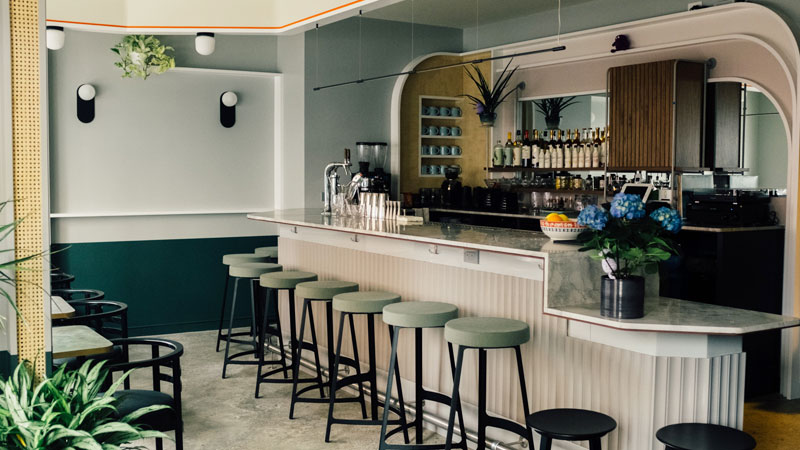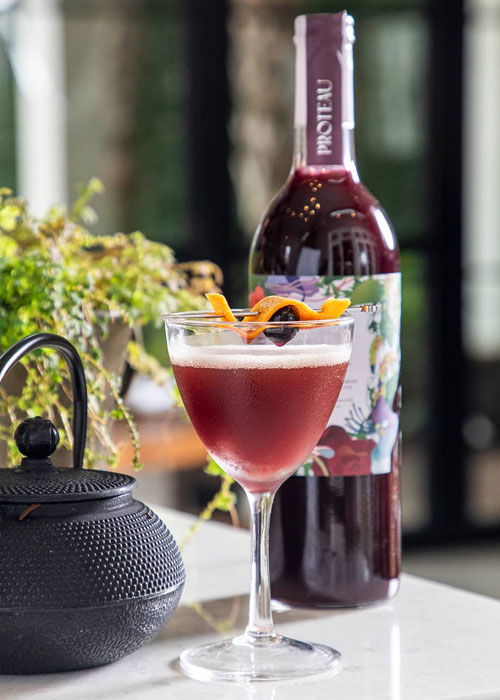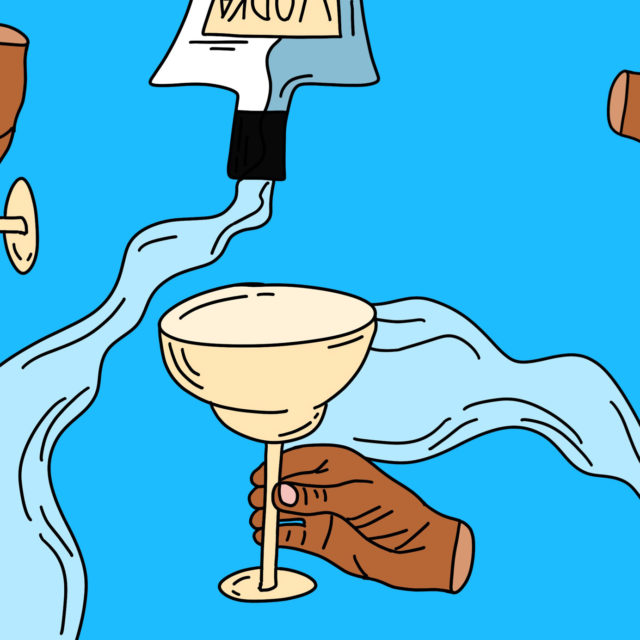We all lived through the barrage of content that streamed through our social media feeds and favorite sites during the month-long event of Dry January. Heightened awareness of our drinking habits is great, but we shouldn’t stop talking about non-alcoholic drinks on Feb. 1.
Many people live sober lifestyles year-round, temporarily or permanently, and for a multitude of reasons. Going out to restaurants and bars is still the go-to way to socialize, so how can we make them a more welcoming place for people who are not drinking alcohol, whether that night or ever?
Catering to the zero-proof crowd is now the latest frontier in making the bar community more inclusive. Restaurateurs, bartenders, and the like have just started heeding this call.
The Invention of the Sober Bar
While they are still few and far between, alcohol-free bars are becoming more of a thing. Getaway got a lot of attention when it opened in Brooklyn in April 2019. It looks like any hip Greenpoint bar would and takes the same care in making its zero-proof cocktails as if they had alcohol in them. Getaway tries to keep it interesting with its flavors and textures, like an “Autumn in New York” cocktail with apple drinking vinegar, mint, turmeric, cardamom, lemon, aquafaba, and black bitters.

Getaway wasn’t the first to take a crack at the sober bar, though. The Other Side in Crystal Lake, Ill., a bar project by the non-profit New Directions Addiction Recovery Services that opened in 2013, caters specifically to the recovery community, giving people an outlet to socialize and have fun in a safe space.
That same year, Vena’s Fizz House opened in Portland, Me., serving mocktails and craft sodas. Two years later, it introduced alcohol to its menu but kept its commitment to making great zero-proof drinks.
How the Zero Filtered Into the Proof
The biggest development yet in the non-alcoholic space is the increasing number of regular bars that have started taking their zero-proof programs seriously. It wasn’t that long ago that non-alcoholic sections consisted exclusively of Shirley Temples and San Pellegrino Limonata — but that’s changing.
“A bar should make everybody feel welcome regardless of your background or life choices,” says A-K Hada, manager at Existing Conditions in New York. The bar has made itself a reputation since its 2018 opening for its cutting-edge cocktail creations, and they are not limited to the boozy ones. The bar team seeks out interesting ingredients so the drinks still feel like something you can’t mix at home, says Hada, like a special Tasmanian honey or umeboshi.

Building a stellar zero-proof program is a big commitment and takes a lot of money and research to hash out. Simon Stilwell says it took him a year to create his non-alcoholic pairings at Wild Common in Charleston, S.C., where he works as the general manager and beverage director. When a guest orders wine, Stilwell says, the bottle is presented, you get a pour to taste, you get a spiel about the winery, and so on. But when you get a juice, club soda, and simple syrup, that can fall flat, especially when you’re pairing beverages with a tasting menu like Wild Common does.
“The ceremony and the experience for me was lost,” he says. “We went about finding products that had an experience that was similar to the alcoholic version. This was a way of bringing everyone into the fold and making them feel like they were getting just as much value.” At Wild Common, this includes creative cocktails but also products like a non-alcoholic sparkling wine from a German producer with a compelling story.
Beverage professionals are constantly finding new, novel ways to cater to sober and sober-curious drinkers. Sometimes that’s utilizing a hit product like Seedlip — a distilled non-alcoholic spirit that’s now poured in 8,000 bars and restaurants nationwide — or rethinking how these drinks are presented on menus. There’s a lot more work to be done, and this could be the most exciting space to watch in the drinks world.
